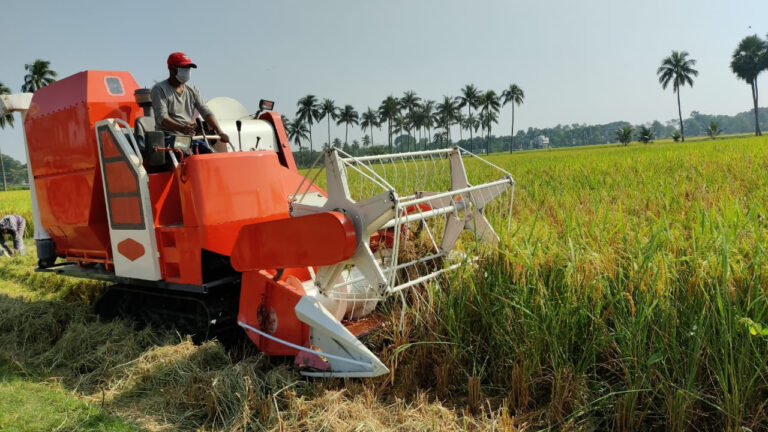
Commercial Agriculture – Modern Farming and Practices
supporting economies worldwide. Unlike subsistence farming, which focuses on producing food for local consumption, commercial farming is designed for large-scale production, efficiency, and profitability. With the integration of technology, sustainable practices, and scientific advancements, Commercial Agriculture has transformed into a modern system that balances productivity with environmental responsibility.
In this article, we’ll explore the meaning, importance, methods, benefits, challenges, and future of Commercial Agriculture, highlighting the modern farming practices that are reshaping the industry.
What is Commercial Agriculture?
At its core, Commercial Agriculture refers to large-scale farming where crops and livestock are produced primarily for sale in local and international markets. This type of agriculture emphasizes:
- High-yield crops and livestock
- Mechanization and automation
- Use of fertilizers, irrigation, and biotechnology
- Profit-driven farming models
Commercial farming has evolved from simple trade-oriented farming to technologically advanced systems that address global food demands.
Key Characteristics of Commercial Agriculture
To better understand how Commercial Agriculture works, here are its main characteristics:
- Large-scale production – Farms often span hundreds or thousands of acres.
- Specialization – Farmers usually focus on a single cash crop (e.g., wheat, cotton, coffee) or livestock type.
- Mechanization – Heavy use of tractors, harvesters, and modern irrigation systems.
- Profit orientation – The goal is to maximize productivity and profit.
- Market-driven – Strong dependence on global supply chains and consumer demand.
- Advanced inputs – Application of fertilizers, pesticides, hybrid seeds, and genetically modified organisms (GMOs).
Types of Commercial Agriculture
Different types of Commercial Agriculture exist depending on geography, climate, and economic conditions:
- Dairy Farming – Focused on large-scale milk production and distribution.
- Grain Farming – Wheat, rice, maize, and barley dominate global grain markets.
- Commercial Livestock Farming – Cattle, poultry, and pig farming for meat and dairy industries.
- Plantation Agriculture – Large estates producing crops like coffee, tea, sugarcane, and bananas.
- Mixed Farming – Combining crops and livestock for efficient land use.
Modern Farming Practices in Commercial Agriculture
1. Mechanization and Smart Machinery
Modern farms rely on tractors, combine harvesters, and drones to save time and labor. Precision machinery reduces waste and improves efficiency.
2. Precision Agriculture
Using GPS, sensors, and data analytics, farmers can monitor soil health, crop growth, and water usage. This technology ensures optimal yields with minimal resource wastage.
3. Biotechnology and GMOs
Genetically modified crops increase resistance to pests, diseases, and climate stress, helping boost food security.
4. Sustainable Irrigation
Drip irrigation, sprinkler systems, and water-harvesting methods are replacing traditional flood irrigation to conserve water resources.
5. Organic and Regenerative Practices
Even in Commercial Agriculture, sustainable methods like crop rotation, cover cropping, and minimal pesticide use are gaining importance.
Benefits of Commercial Agriculture
- Food Security – Provides large quantities of food to meet global demand.
- Economic Growth – Creates jobs and boosts exports.
- Technological Advancement – Encourages innovation in farming tools and biotechnology.
- Higher Productivity – Modern practices allow higher yields on limited land.
- Global Trade – Connects farmers with international markets, increasing profitability.
Challenges Facing Commercial Agriculture
Despite its benefits, Commercial Agriculture faces several challenges:
- Climate Change – Extreme weather events threaten crop yields.
- Soil Degradation – Overuse of fertilizers and monocropping reduce soil fertility.
- Water Scarcity – Agriculture accounts for nearly 70% of global freshwater use.
- High Costs – Advanced machinery, fertilizers, and technology require significant investment.
- Environmental Concerns – Deforestation, greenhouse gas emissions, and loss of biodiversity.
Future of Commercial Agriculture
The future of Commercial Agriculture lies in sustainability and innovation. Farmers and agribusinesses are adopting eco-friendly solutions to reduce environmental impacts while ensuring food security. Key trends include:
- Vertical Farming & Hydroponics – Growing crops in controlled environments.
- AgriTech Integration – AI, robotics, and blockchain for better farm management.
- Carbon Farming – Practices that capture and store carbon in soil.
- Renewable Energy on Farms – Solar and wind power integration.
By blending technology with environmental awareness, Commercial Agriculture is poised to shape the next era of farming.
Best Practices for Sustainable Commercial Agriculture
- Rotate crops to preserve soil health.
- Use renewable energy for farming operations.
- Adopt water-efficient irrigation systems.
- Reduce dependency on chemical fertilizers.
- Encourage agroforestry and biodiversity conservation.
Conclusion
Commercial Agriculture has evolved into a powerhouse of food production, blending technology, innovation, and sustainability. From mechanization to precision agriculture, modern practices are making farming more efficient and resilient. While challenges such as climate change and resource scarcity remain, adopting sustainable methods ensures long-term productivity.
As the world population continues to grow, Commercial Agriculture will remain the backbone of global food systems, shaping economies and securing our future.
FAQs About Commercial Agriculture
Q1. What is Commercial Agriculture?
Commercial Agriculture is large-scale farming aimed at producing crops and livestock for sale in markets, using advanced technology and practices.
Q2. How is Commercial Agriculture different from subsistence farming?
Subsistence farming produces food mainly for family consumption, while Commercial Agriculture is profit-driven and market-oriented.
Q3. What are examples of Commercial Agriculture?
Examples include dairy farming, grain farming, plantation agriculture, and livestock farming.
Q4. Why is Commercial Agriculture important?
It provides food security, creates jobs, drives economic growth, and supports global trade.
Q5. What modern technologies are used in Commercial Agriculture?
Technologies include drones, GPS-based precision farming, biotechnology, and smart irrigation systems.
Q6. What are the environmental concerns of Commercial Agriculture?
Concerns include deforestation, soil erosion, excessive water use, and greenhouse gas emissions.
Q7. Can Commercial Agriculture be sustainable?
Yes, by adopting eco-friendly practices like crop rotation, renewable energy, and reduced pesticide use.
Q8. What is the future of Commercial Agriculture?
The future focuses on sustainability, digital farming, vertical agriculture, and renewable energy integration.
Q9. Which countries rely heavily on Commercial Agriculture?
The U.S., Brazil, India, China, and Australia are major players in global Commercial Agriculture.
Q10. How does Commercial Agriculture support global trade?
It supplies key commodities like grains, coffee, and livestock to international markets, boosting trade and economies.
Q11. What are the main crops grown in Commercial Agriculture?
Crops include wheat, rice, maize, soybeans, cotton, sugarcane, coffee, and tea, depending on climate and market demand.
Q12. How does Commercial Agriculture affect rural development?
It creates jobs, builds infrastructure, and boosts local economies, but sometimes leads to land consolidation and displacement.
Q13. What role does technology play in Commercial Agriculture?
Technology improves crop yields, reduces labor costs, and enables precision farming through AI, drones, and IoT devices.
Q14. Is Commercial Agriculture environmentally friendly?
Traditional methods can harm ecosystems, but sustainable practices like regenerative farming and smart irrigation are improving its eco-friendliness.
Q15. What is the difference between intensive and extensive Commercial Agriculture?
- Intensive: Small land area with high input and productivity (e.g., dairy farming).
- Extensive: Large land area with lower inputs per acre (e.g., cattle ranching).
Q16. How does Commercial Agriculture impact food prices?
It stabilizes supply, often lowering costs, but global market fluctuations and climate issues can raise prices.
Q17. What is plantation farming in Commercial Agriculture?
Plantation farming focuses on single cash crops like coffee, tea, or rubber, usually for export.
Q18. How does climate change affect Commercial Agriculture?
Rising temperatures, droughts, and floods reduce yields.
Q19. What is vertical farming, and how does it relate to Commercial Agriculture?
Vertical farming grows crops indoors in stacked layers, helping urban Commercial Agriculture reduce land use.
Q20. Can Commercial Agriculture help fight world hunger?
Yes, by producing food at scale and using technology to distribute it efficiently, though equitable access.


